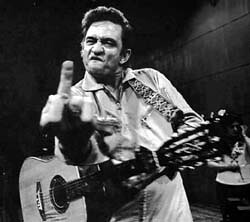The burning of Villages
When faced with problems I find it best to engage the problem-solving model, While this is often the best course of action in interpersonal and/or individual problems, I being a fan of many different disciplines find that when engaged in use of the model, that several schools of thought give you very a different prospective, and very different courses of action.
Let’s take a look at these disciplines and the application of the problem solving.
Social/Psychological: The individuals’ well-being and process are foremost, and the engagement of process centered exploration on previous events and/or past history and there effect on the presenting problem, is often the center. Individual strategies are developed, with this knowledge, and are used to achieve positive long term change, thus minimizing the reoccurrence of the presenting problem.
Conflict Resolution: The focus of conflict resolution is very strait forward; it is to end and/or minimizes conflict. Focus is based on individual need, and/or presented wants in relationship to the expressed problem. The issues are discussed at length, with each side stating both position and actions that would remedy or eliminate the issues/problem. The focus is on give and take, each side giving so as to gain. With the end goal being a workable and effective plan to solve the problem, in which both parties find a win/win situation.
Business: Best summed up as what is the best result that would protect or/maximize the individual/corporations position. Based off of potential losses and potential gains, it often takes into account perceived future outcomes, vs. immediate problem solving, i.e.: if this happens, this might follow, and if that happens, etc. This model expresses a win/loss view, but is often capable of meeting half-way in solution generation, but the overwhelming interest is how this affects the bottom line.
Strategic/Tactical Model: While war may be started for economic gain by politicians (see Clausewitz’s On War, 1832). It is left to the military to fight them, and what is conflict but a war on a smaller scale, (an interesting observation would be that, whatever the size of the conflict in the Strategic/Tactical discipline, it leaves both innocent and the active combatants, just as dead). However, the discipline leaves the individual with many strategies to address and engage a problem/conflict. Those options range from the set piece battle with the goal of turning an enemy’s flank, to strategic attack on centers of support, and let’s not forget guerilla-warfare.
Results: Given my occupation and profession I first addressed the problem that I am dealing with through both the Social/Psychological and the Conflict Resolution disciplines. However that left me with a less than satisfactory ending. I did however find both solace and a course of action that I feel both addressed the issues and allowed some limited level of satisfaction in the Strategic/Tactical Model.
This model allowed me two lessons that readily lend themselves to my current situation. The first being those of the cold-war, when faced with massive relation and mutually assured destruction an un-easy truce was maintained, however the use of third-world conflicts served to keep both parties involved by proxy. The world settled into brinkmanship and a large population became pieces on the global chess board. This however left one winner and one loser but, it was successful in maintaining the status-quo, from 1946 until the fall of the Soviet Union.
The other was the one that I decided should be my most effective action, and that entails direct action. As anyone who reads this knows the only effective way to survive an ambush is to charge into the fire, finding safety within the enemy’s cone-of-fire, and then engaging. This tactic is trained heavily in militaries around they world, and it must be, for it is human nature to seek safety in time of danger. The individual must be trained to run into the sound of fire not away.
While this is an action/tactic not a strategy it serves to set the stage. The Strategic/Tactical Model gave me with the example of the Napoleonic invasion of Russia (can you hear the Tchaikovsky?). A version of this solution was used by the US military in Vietnam with poor results, expressly in the strategic hamlet program, “We have to destroy it in order to save it”.
However, this was not the mind set of the Russian Generals when they faced what by all estimates was the finest, best trained and equipped army in the world. Their course was to let the Grand Army, in further and further, allowing them to gain only scorched earth and salted wells.
You see it was better to destroy what you had, than to let it fall into the hands of the enemy, and in the end, what your foe has gained, will win the war/conflict for you. Afterward you might have the chance to rebuild. A plain example would be that of burning your own house down, so the neighbor would not have the chance to. I believe in euchre, this can also be accomplished by use of the trump-card.
It has been a very eye-opening few days, and given the current situation, it promises to have some very enlightened days ahead, as for introspection, I am contrite where needed, ashamed when applicable, but maintain a core belief in the individuals ability to change direction, and learn from past mistakes, even if that means salting my own well or burning my own fields (yes, I am that Catholic, Mia Culpa, Mia Culpa, Mia Maxima Culpa, and a bit of a masochist). I just wanted to take time from my work here at the prison to share some random thoughts for a Friday, as I stand with my Zippo in hand, bowed but not to foe.
Quote for today:
One is left with the horrible feeling now that war settles nothing; that to win a war is as disastrous as to lose one.
Agatha Christie, Autobiography (1977)
I remain as always,
JQP


<< Home